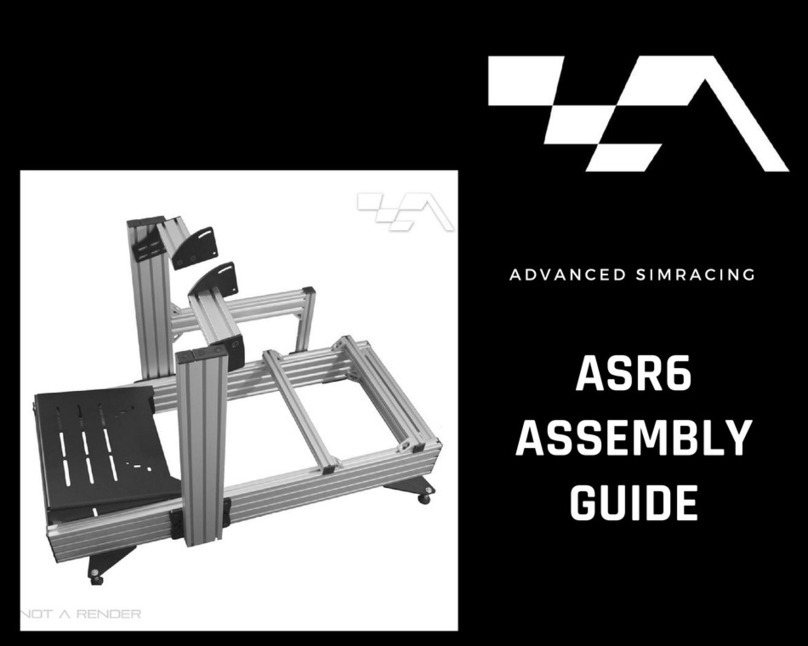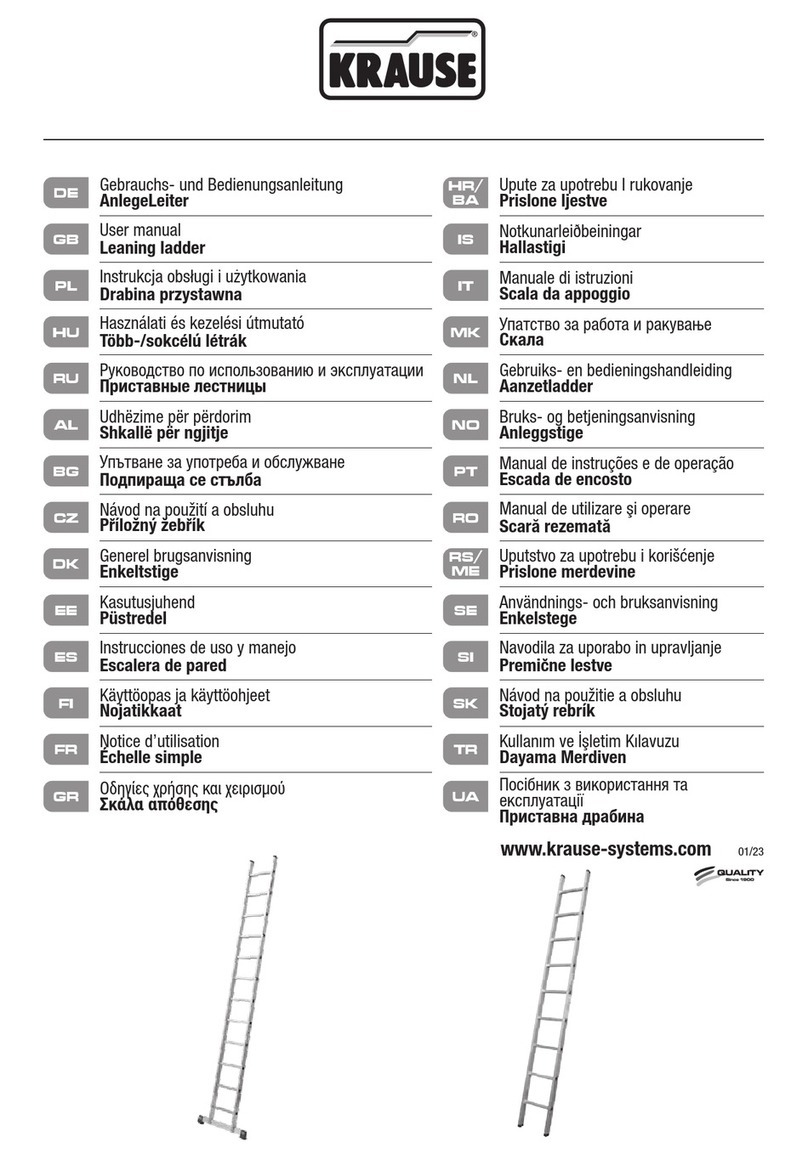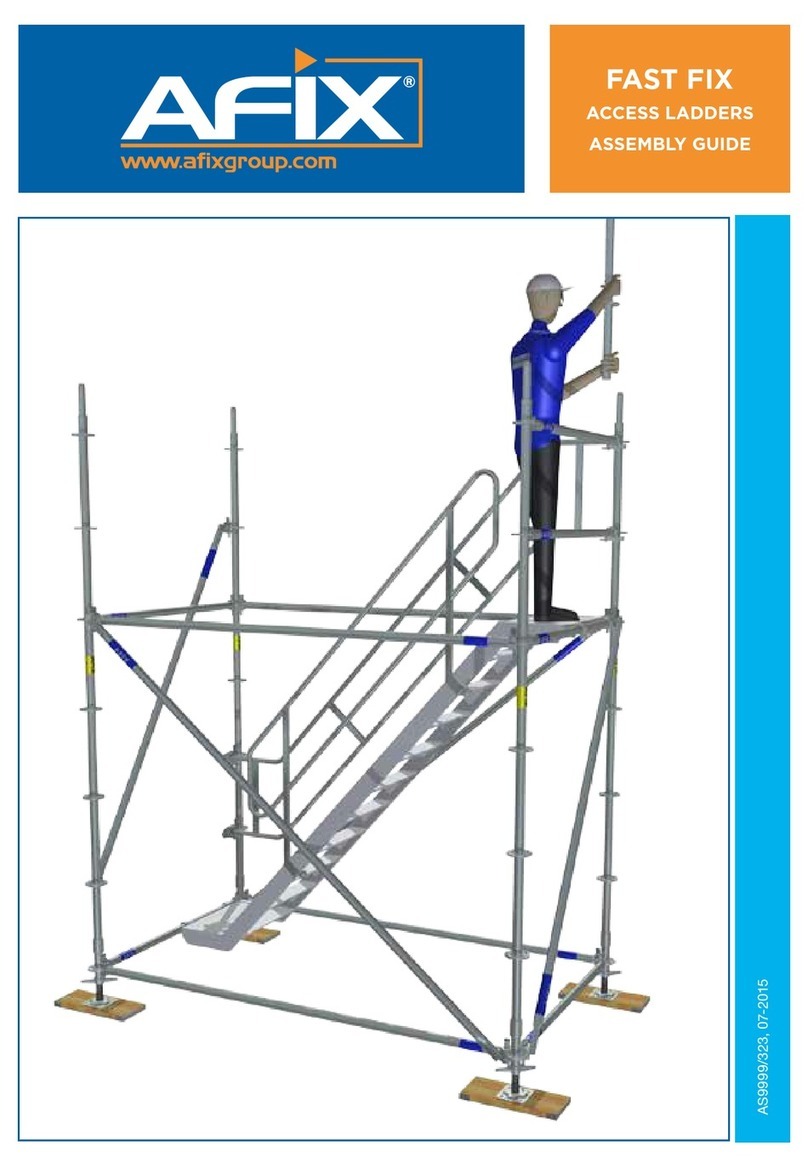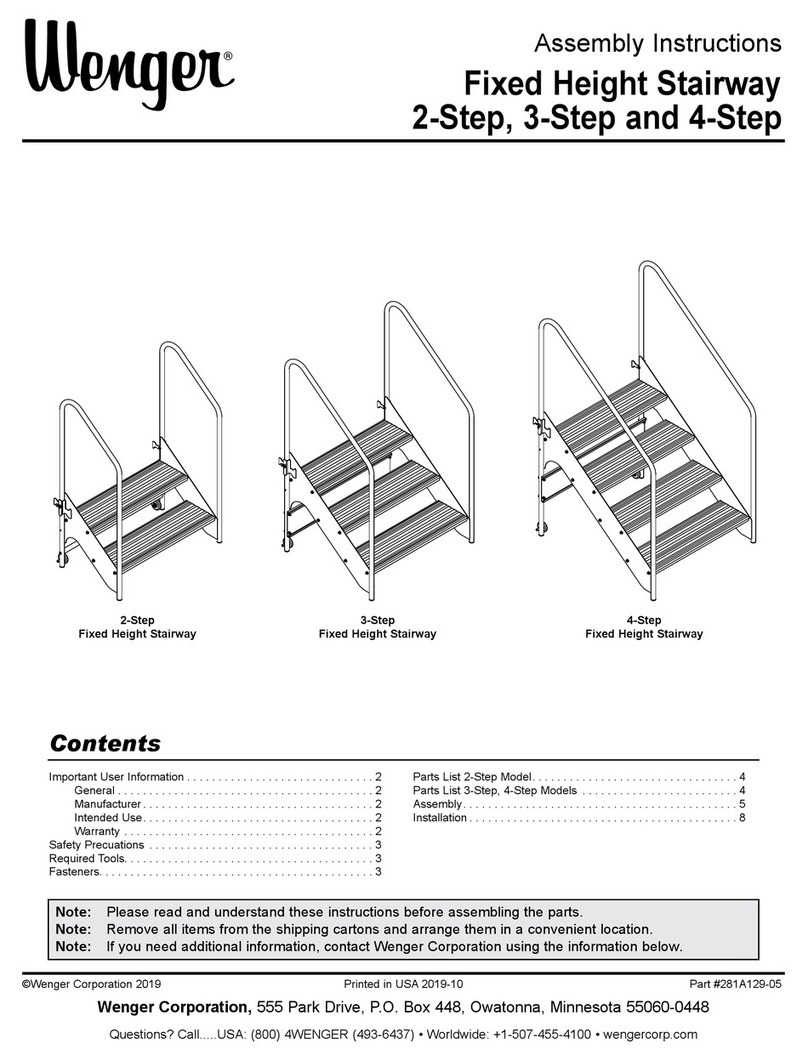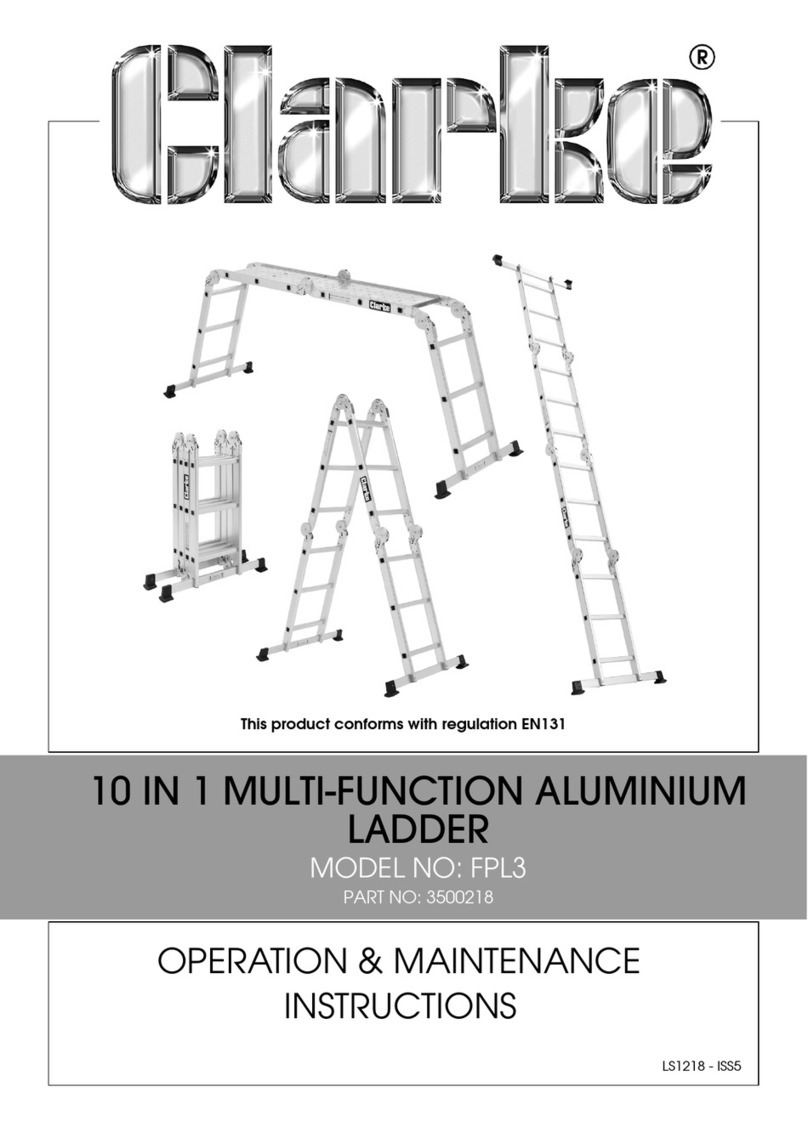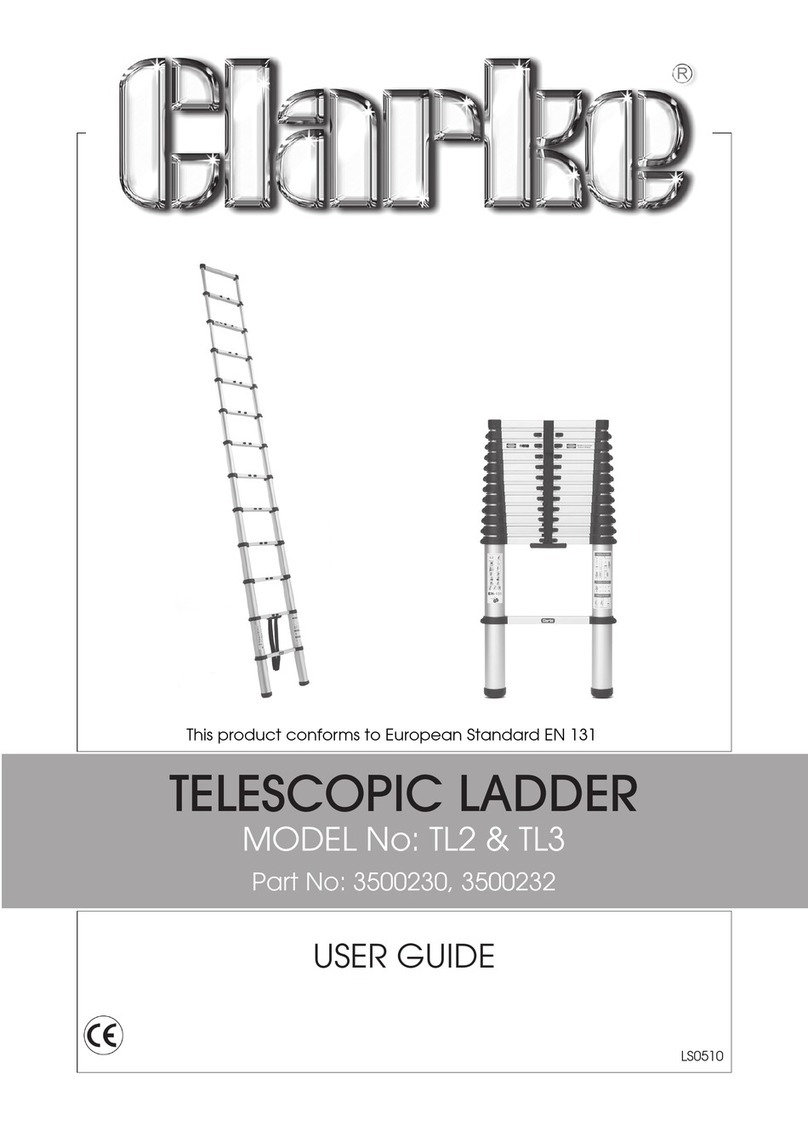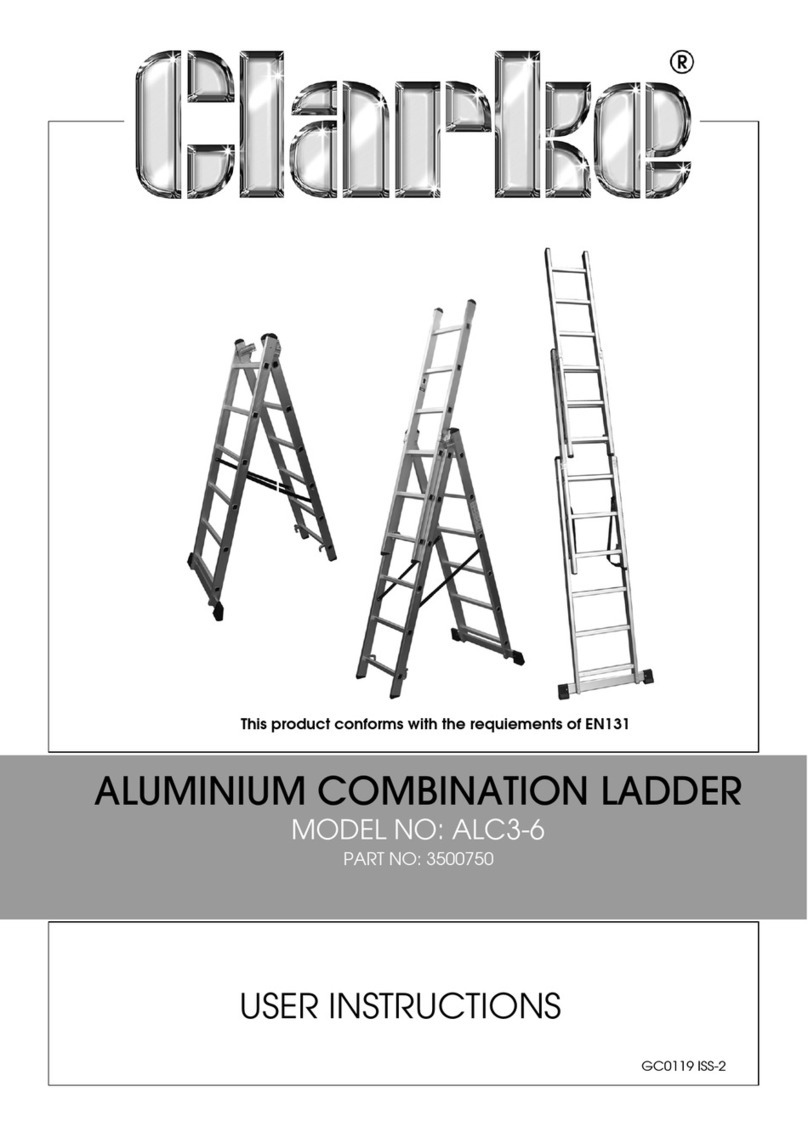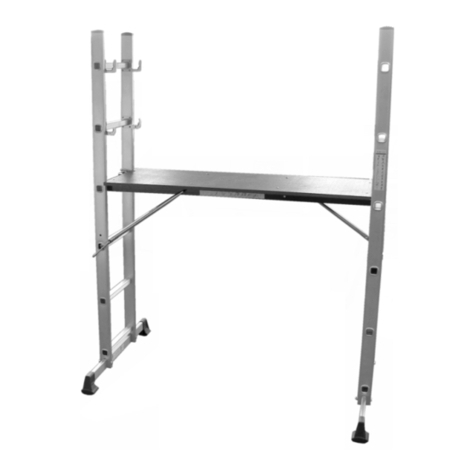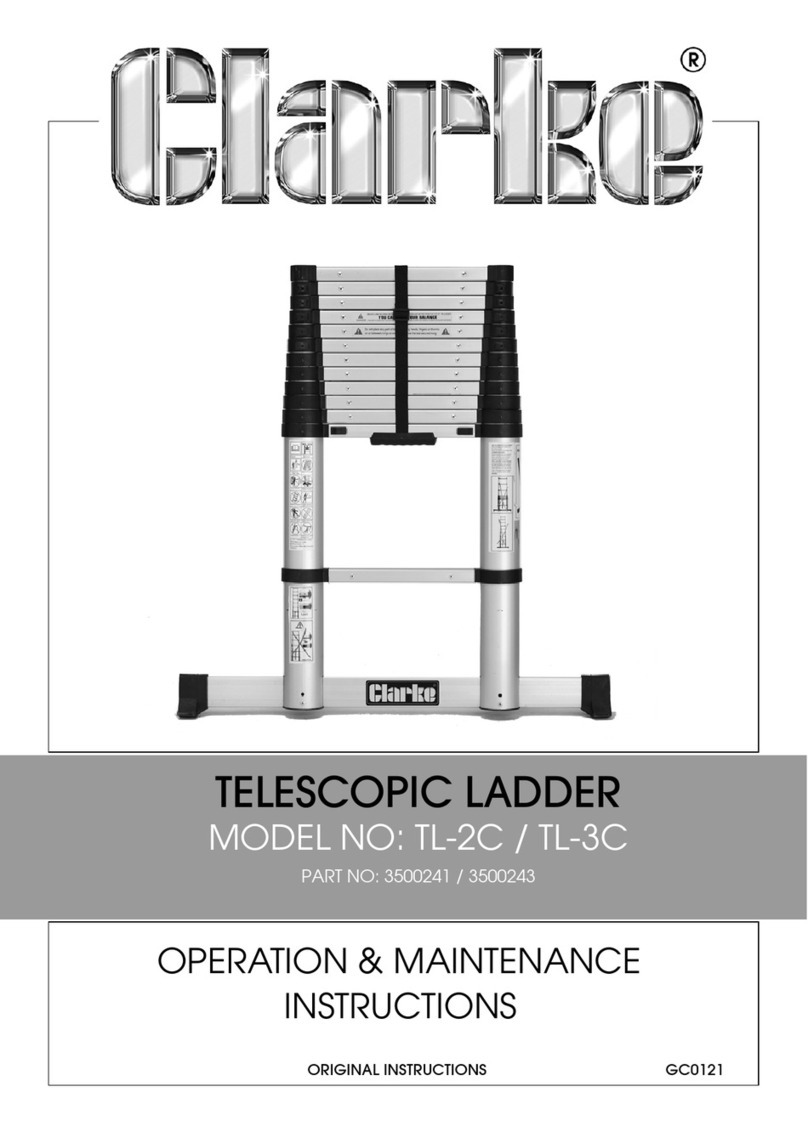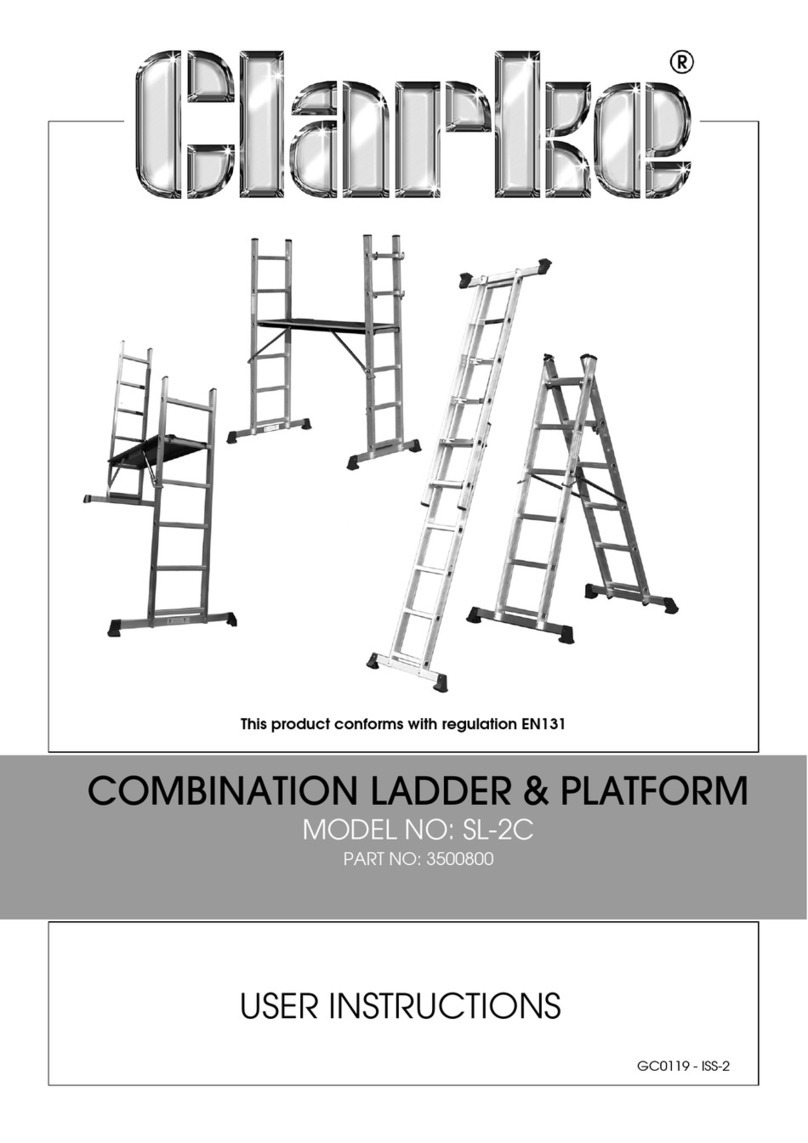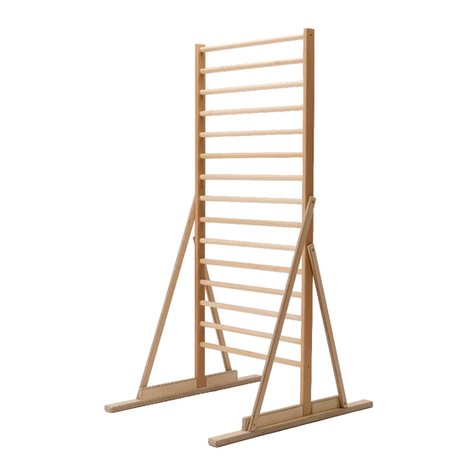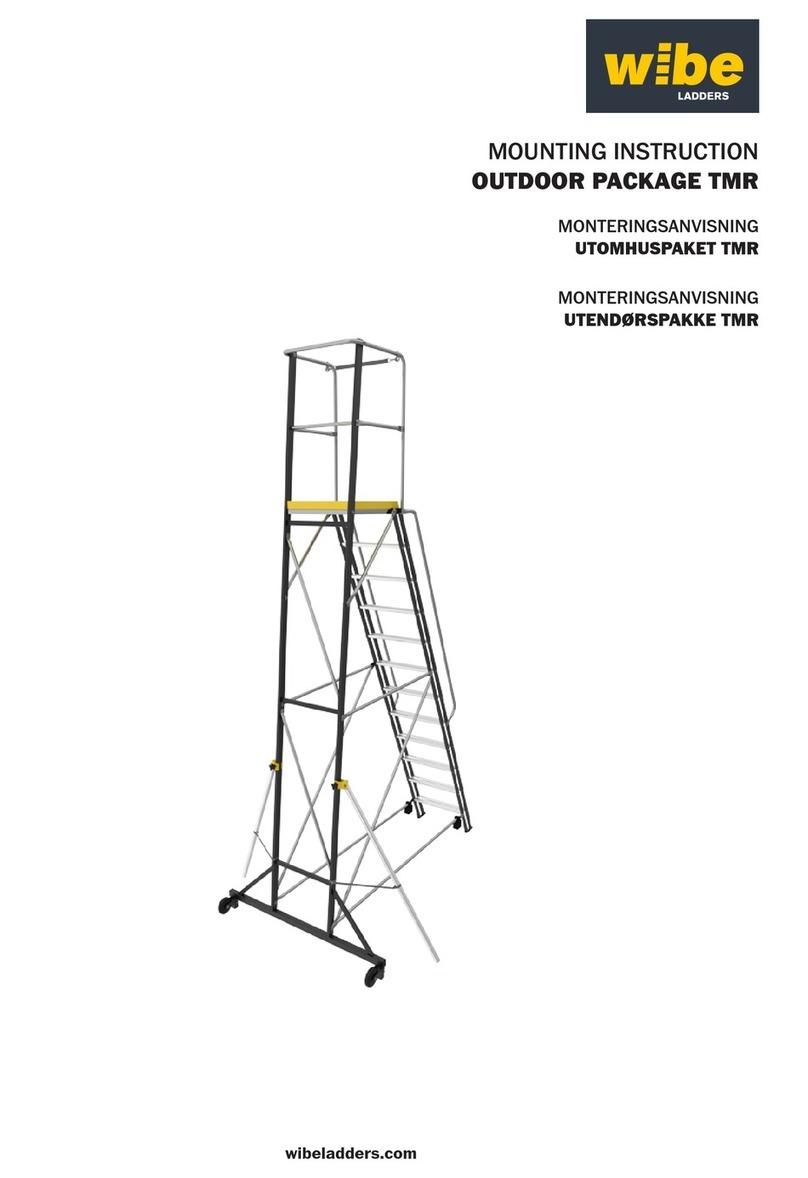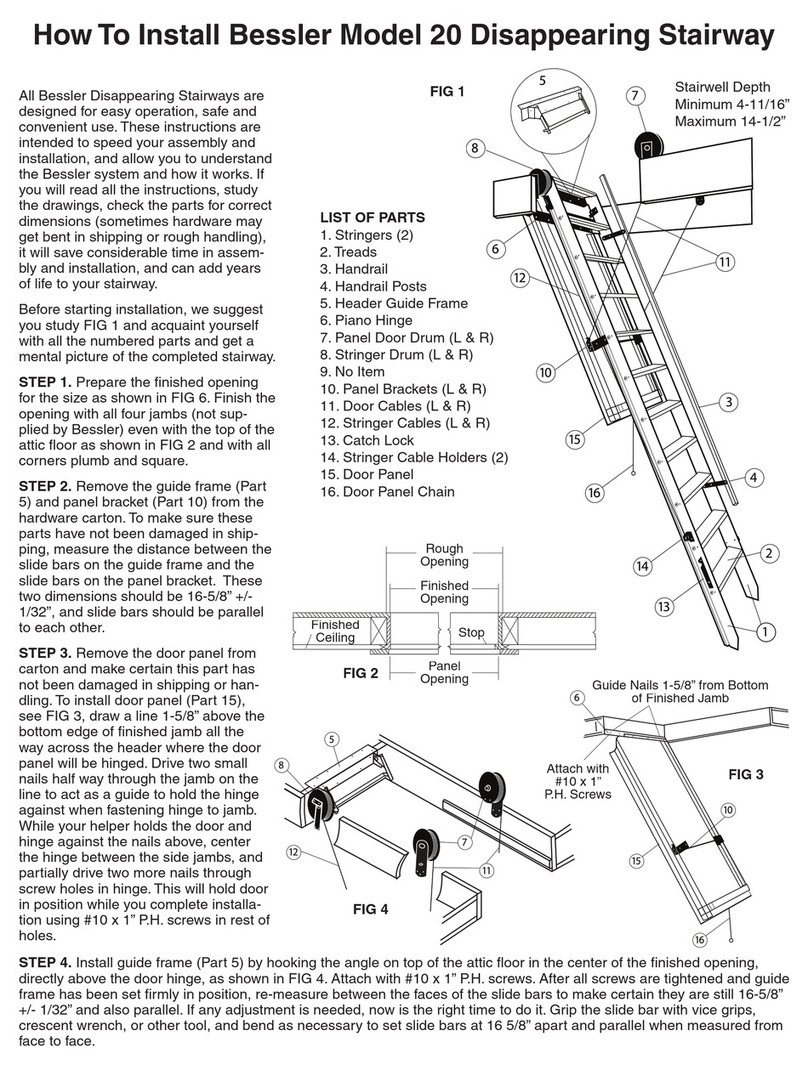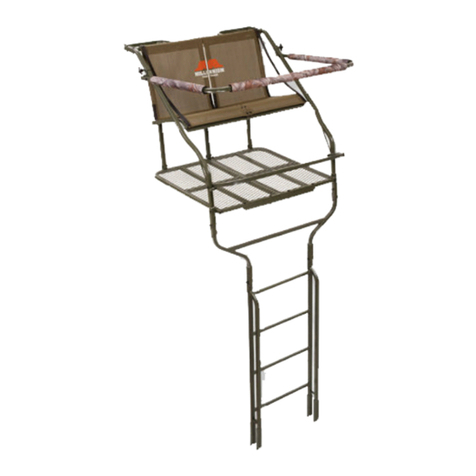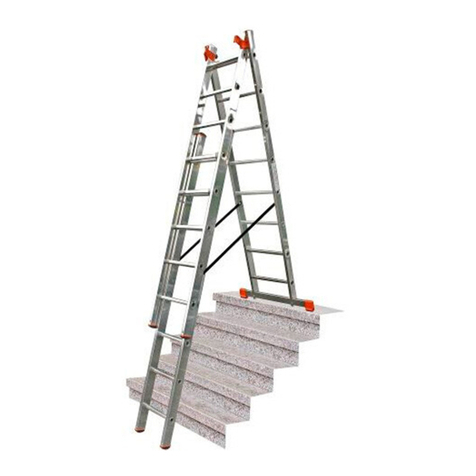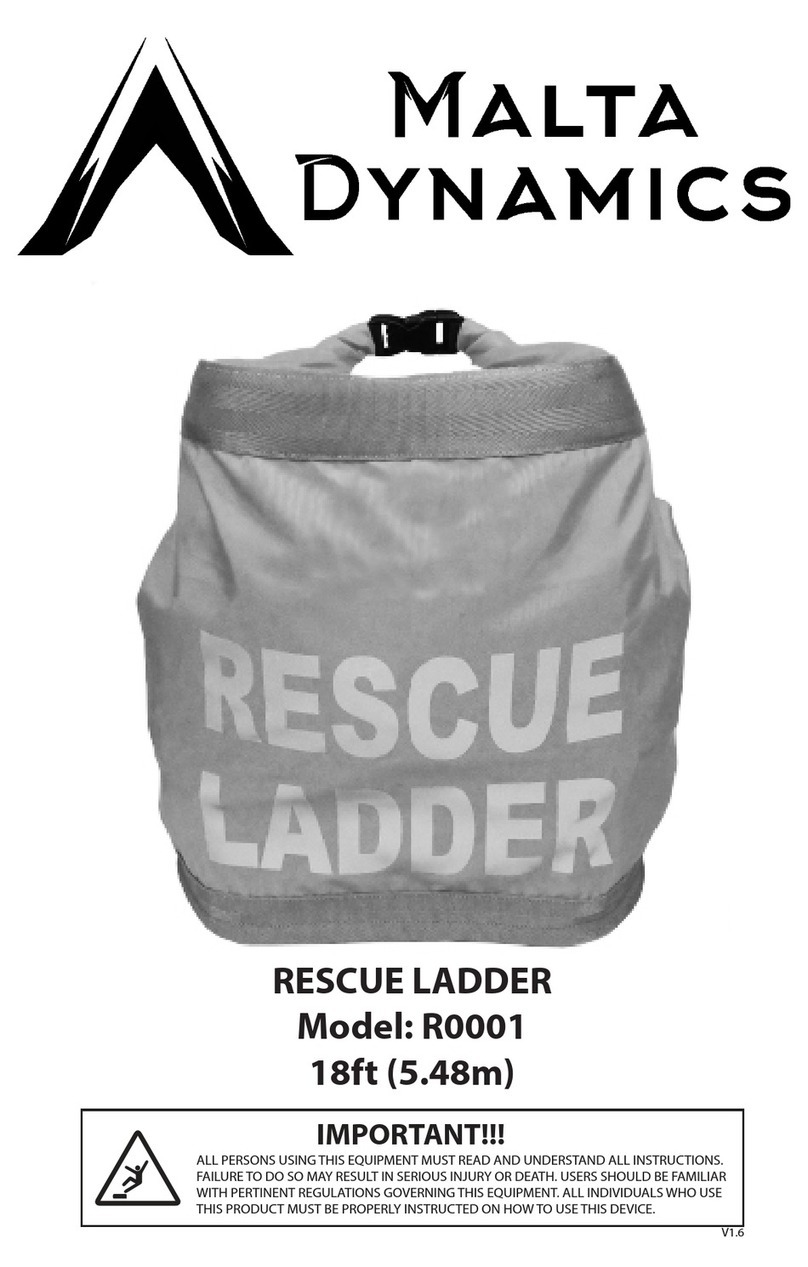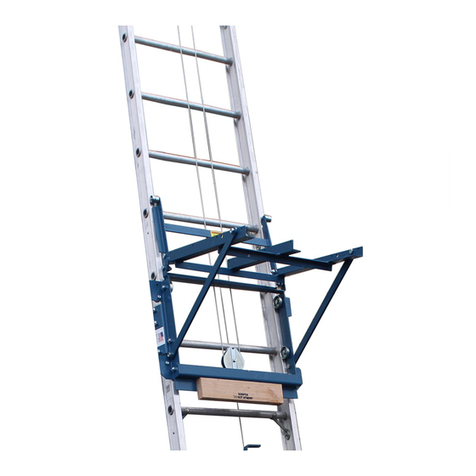Safety Precautions
WARNING:
As with all machinery, there are certain hazards involved with their operation
and use. Exercising respect and caution will considerably lessen the risk of
personal injury. However, if normal safety precautions are overlooked or
ignored, personal injury to the operator or damage to property, may result.
1. ALWAYS learn the ladders applications, limitations and the specific potential hazards
peculiar to it. Read and become familiar with the entire user and operating
instructions.
2. ALWAYS check ladder for damage etc before using it, any damage, should be
checked to ensure that the ladder will operate correctly, and perform its intended
function safely. If in doubt, DO NOT use the ladder. Consult your local dealer.
3. ALWAYS keep ladder rungs clean and dry.
4. ALWAYS ensure the ladder is standing on a firm and level surface, also ensure the
ladder is safely secured, preferably at the top and bottom.
5. ALWAYS keep work area clean. Cluttered areas invite accidents.
6. ALWAYS maintain your ladder in top condition.
7. ALWAYS keep children away. All visitors should be kept a safe
distance from the work area, especially if using
chainsaws etc.
8. ALWAYS concentrate on the job in hand, no matter
how trivial it may seem. Be aware that accidents are
caused by carelessness due to familiarity.
9. ALWAYS keep your proper footing and balance at all
times, don’t over-reach. For best footing, wear rubber soled
footwear. Keep floors clear of oil, scrap wood, etc.
10. ALWAYS wear any safety equipment, such as hard hat, work
gloves and goggles etc if the task being carried out requires
them.
11. ALWAYS exercise extra care when raising ladders especially
beneath high voltage cables etc.
12. ALWAYS extend the ladder by at least 1.10m above any
landing place.
13. ALWAYS ensure the ladder leans at an angle of approximately
75º from horizontal (1m out for each 4m height).²)
13. ALWAYS ensure as comfortable position as possible before
commencing work.
14. ALWAYS keep a secure grip.
15. NEVER use the ladder whilst under the influence of alcohol or drugs.
16. NEVER stand on the top rail of a step ladder.
17. NEVER ascend above the hinge point when used as a stairwell ladder.
SAFETY FIRST ALWAYS
Any signs of fatigue, especially in the legs and feet etc, try changing position to regain a
comfortable position, if that fails to relieve any symptoms of tiredness or fatigue, descend
the ladder and take a rest break, DO NOT climb ladder again until completely ready.
-3-

